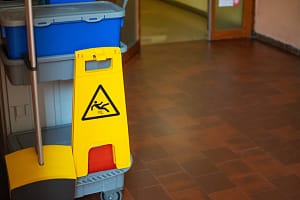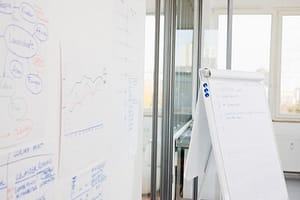Read more
Technology has assisted us in many ways, even when it comes to safety at work. With health and safety being a huge focus for the British government and companies alike, there has been a decrease of 85% of fatal injuries to employees in the workplace since 1974 — which evidently shows that technology has had some sort of influence on employee safety.
Research shows that self-reported, non-fatal injuries have halved since 2000. When looking at the rate of employers who reported non-fatal injuries, the figure was down by 58% since 1986/87.
The most injuries occur in manual jobs. But, the rate of self-reported musculoskeletal disorder has dropped by 40% since 1990, which is essentially damage to the skeleton. Around this time was when advancements in technology were growing — offering more convenient modes of working to help safeguard employees.
As technology continues to develop, we’re likely to see more advancements in health and safety in the future.
According to research conducted by YouGov, only 45% said that they would feel comfortable sharing personal information with wearable devices. 69% said that they wouldn’t feel comfortable due to fear of discrimination from their employer — we expect that this figure to lower as the world conforms to growing digital opportunities.
What technology is available to help improve your health and safety?
Check-in Tech
It’s important to know who is in the building at a certain time — for fire drills for example. The StaySafe Business wristband can do it all for you. It includes many features such as a discreet panic button for workers who are faced with a difficult situation, a ‘man down’ alert when the button detects a fall or impact and more. However, this can also come in the form of an app depending on company budget — and is likely to become a workplace necessity in the near future.
Clear safety signs
You can keep costs down with projected safety signs. Repainting caution lines and other safety essentials can be expensive — and result in business downtime in the process. By purchasing a projector and a gobo outlines, such as caution lines and stop signs, businesses are able to illuminate the required signs with minimal maintenance.
The use of drones
You’ve probably heard more about drones recently. They’re becoming more essential to the workplace too — helping to prioritise health and safety. Using drones in the workplace has allowed businesses to access dangerous areas, such as those that are too hot, cold or small for employee access. Reducing the risk to employees, the drones are able to collect the required data and deliver it timely to the appropriate person.
3D technology
3D technology in the workplace can be used to advance training methods. This allows workers to become more familiar with the area they are about to work in — allowing them to see what’s involved and make effective judgements on how to complete the job in the safest way possible. This helps reduce the likeness of injuries as workers are already aware of the scenario and know what to expect.
Artificial Intelligence (AI)
It’s Cisco and Cortexia Vision Systems who are aiming to improve workplace safety through AI with funding from the government. With aims to reduce risk and human error whilst encouraging productivity within a company, AI-SAFE will ultimately use video cameras above the entrances and exits of different operational areas and detect whether those entering/exiting are wearing the right equipment. This includes headwear, eyewear and footwear, helping to reduce the risk of contamination — which was once impossible to instantly detect. AI-SAFE will then restrict access to those who aren’t compliant and alert the correct authorities within the business.
Self-driving vehicles
Autonomous vehicles could be impacting you and your business. Essentially, this driverless vehicle will be able to detect its lane and make appropriate changes to the route if needed — whether this is being blocked by an item or crowd of people. As sometimes workspaces can be tight, this vehicle will stop collisions from occurring.






Leave a Comment